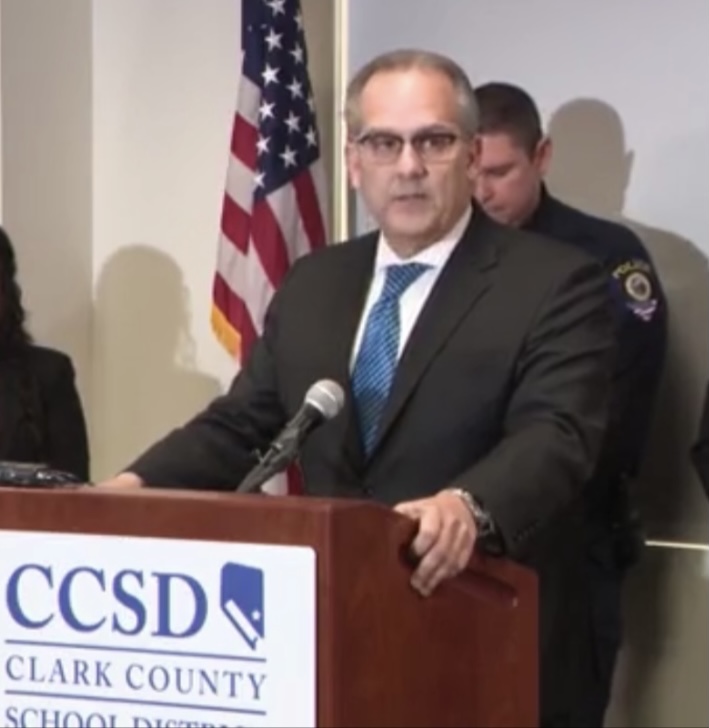EDITORIAL: The attacks on teachers must stop now
After the last two years, assault and battery are the last things educators need to worry about
May 9, 2022
An unexpecting high school teacher left-for-dead in her classroom after being ruthlessly sexually assaulted by a student. The April 7 incident at Eldorado sent shockwaves throughout the valley, shifting the discussion about violence in schools from tense to explosive. On the next day, in fact, three other incidents in the valley against teachers drew attention: A freshman threatened to stab a teacher at Foothill, an 8th grader almost cut staff members with a pair of scissors, and a Palo Verde student was arrested for battery against a staff member. These vicious assaults shone a light on a different and new aspect of student violence targets: teachers.
Though there have been a plethora of stories documenting horrific student on student violence in Clark County schools, including here, worries about how this violence impacts educators is relatively new. This recent string of incidents, however, has put pressure on the school board to better protect educators.
There is nobody more vital to our community than the men and women teaching our kids. Thus, there is nothing more disgusting than the attacks inflicted on them. Everything that can be done to pretend this torrent of abuse must be done. Today.
CCSD, to their credit, has taken an important step in protecting teachers: they’re soon to provide every teacher with panic buttons. Currently just notifying administrators is not enough, however. Teachers must be able to contact local law enforcement immediately, conveniently and wirelessly.
Panic buttons are important for two reasons: One, they provide educators a concrete and direct way to access help if they’re lives or safety are endangered by a student. A teacher who fears what a student may do to them may struggle with planning the correct course of action if an incident were to occur. The current panic buttons only direct an announcement to the front office and the newly installed phone buttons are routed only to the administration’s offices. A panic button to immediately and directly notify law enforcement in the school to arrive and protect them is a better step in the right direction.
Moreover, panic buttons provide more than just material protection to teachers – they allow for an opportunity to let them know they’re valued and respected. Shifting to policies that allow for teachers to see how willing we are to protect them would be deeply important symbolism: it would be us saying that enough is enough to the attacks on teachers.
Some may say that that’s performative, but there is an important role in public policy for making people feel respectful and dignified. It would send a message that schools are the last place educators should feel unsafe, and everything will be done to ensure that safety. That kind of respect is critical, especially given the rising problem of teacher shortages that have plagued the valley. Currently, there are over 1,500 teaching vacancies and that number shows no signs of slowing down.
Some on the school board have advocated for a “restorative justice” model for dealing with student misconduct. Regardless of the merits of this policy, we must recognize it is most important for students to abide by the rules out of respect for authority. Policies that recognize that not all students will do so, and provide the appropriate protections given that, will be critical as student violence continues to be a major issue. This also may mean the school board reinstating disciplinary measures that have been removed.
Outside the field of public policy, we should also move toward a school culture that gives greater respect to educators. Teachers are already widely trusted among Americans, but a student culture that prioritizes delinquency and rebellion against their educators is a profound problem. A culture in which students are encouraged to engage in this violence as they pursue internet fame is an even more profound problem. Ensuring a fostering of better relations between teachers and their students can reduce tensions, making violence on both sides less likely.
The rage that has been building in recent months is entirely justified. Beyond the usual political and economic attacks on the public servants, now many educators fear the very people they seek to work for. “Despicable” doesn’t even begin to describe it.
The crisis facing our schools is multi-faceted, so it makes sense that our methods of handling it will be too. While nothing should be off the table, we should never hesitate to seriously punish those who seek to endanger our teachers.









